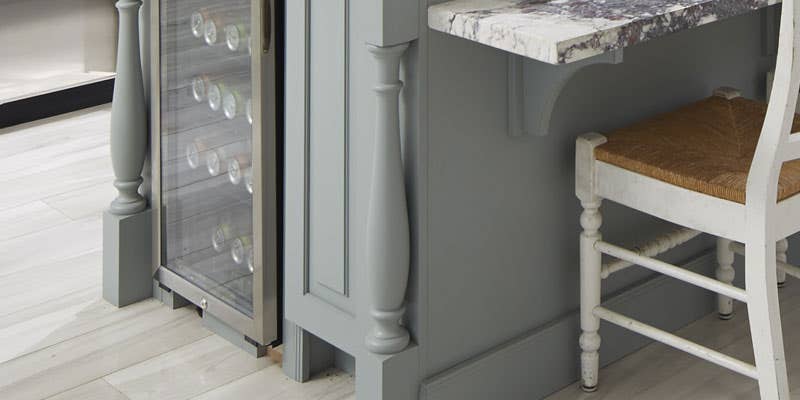Cutting-edge and Trendy Styles in Modern Legs For Kitchen Island Solutions
Cutting-edge and Trendy Styles in Modern Legs For Kitchen Island Solutions
Blog Article
An Overview to Choosing the Perfect Legs For Kitchen Area Island for Your Home
Picking the optimal legs for your cooking area island is a nuanced decision that affects both the capability and aesthetic allure of this central area. Variables such as height, materials, and design play a critical role in balancing your island with the total cooking area style. Furthermore, recognizing the importance of stability and maintenance can substantially affect your selection. As you consider these elements, it ends up being obvious that the appropriate legs can change not just the appearance of your kitchen but likewise its functionality for many years to find. What certain attributes should you focus on in this option procedure?

Recognizing Kitchen Area Island Legs
When selecting legs for a kitchen area island, it's important to recognize their visual and functional duties in the overall style. The legs act as a vital support group, making sure security and sturdiness for the island, which often works as a workspace, dining location, or collecting spot. Consequently, the choice of material and building and construction technique should be durable adequate to endure everyday usage and potential wear.
In enhancement to their structural obligations, legs add considerably to the island's visual allure. They can enhance the kitchen's style, whether through standard, modern, or diverse layouts. The elevation and proportion of the legs are also vital factors to consider; they have to harmonize with the island's countertop height while guaranteeing comfortable seating for those utilizing the area.
Additionally, the leg layout can affect the general circulation of the cooking area. Open, ventilated leg designs can develop a feeling of agility, while strong, considerable legs might communicate a much more based and steady aesthetic - Legs For Kitchen Island. Understanding these visual and useful facets will certainly assist house owners in making notified choices that complement their cooking area's layout and improve its functionality
Popular Styles and Materials
The selection of legs for a kitchen area island encompasses a range of popular styles and products, each offering distinct attributes that can enhance both performance and visual appeals. Typical legs generally show ornate details and workmanship, enhancing traditional cooking area designs.

Height and Security Considerations

The legs of the cooking area island ought to give sufficient assistance, guaranteeing that the framework can endure day-to-day usage without changing or tottering. Material choice plays a significant function in security; metal legs, for circumstances, often tend to provide better strength contrasted to timber.
Matching Your Kitchen Visual
Selecting the ideal legs for your cooking area island exceeds performance; it additionally plays a significant function in the total aesthetic of the room. When choosing legs, think about the layout style of your cooking area. For a contemporary appearance, streamlined metal or minimalist styles can develop a tidy, modern vibe. On the other hand, typical or rustic kitchen areas usually gain from wooden legs with elaborate outlining or a troubled coating, boosting heat and personality.
Color is another crucial element. Legs that match or contrast with your island's surface and surrounding cabinetry can create visual consistency or striking focal factors. For example, pairing dark wood legs with a light marble countertop can include deepness and rate of interest. In addition, take into consideration the surface of the legs; matte, glossy, or textured finishes can significantly influence the total feel of the kitchen.
Setup and Maintenance Tips
Setting up cooking area island legs needs mindful interest to information to guarantee both security and aesthetic charm. Make use of a stud finder to find wall surface studs if you are attaching the legs to a wall or making use of brackets for added assistance.
When securing the legs, utilize high-grade screws and, if required, timber adhesive for additional strength. For metal legs, make certain that you are using proper supports and devices to avoid damages to your floor covering. It is advisable to inspect for levelness after setup, making changes as needed to prevent tottering.
Upkeep is equally essential for durability - Legs For Kitchen Island. Regularly check the legs for any type of indications of wear or helping to loosen, specifically in high-traffic locations. Clean the legs with a suitable cleaner, avoiding rough materials that may scrape the surface area. For wood legs, take into consideration using a timber conditioner occasionally to keep their coating. By adhering to these installment and upkeep tips, you can ensure that your kitchen island legs remain both use this link functional and visually appealing.
Conclusion
In final thought, selecting the ideal legs for a kitchen area island demands cautious factor to consider of height, security, and aesthetic compatibility. Inevitably, thoughtful leg choice plays a crucial function in boosting both the functionality and layout of the kitchen area room.
When selecting legs for a cooking area island, it's important to recognize their functional and visual duties in the overall style. Open, ventilated leg styles can produce a feeling of agility, while solid, considerable legs might convey a more grounded and stable visual. The legs of the cooking area island should provide sufficient assistance, ensuring that the structure can hold up against everyday usage without wobbling or moving.Installing kitchen area go to website island legs needs mindful attention to detail to guarantee both security and visual allure.In conclusion, selecting the suitable legs for a kitchen area island demands cautious consideration of height, stability, and aesthetic compatibility.
Report this page